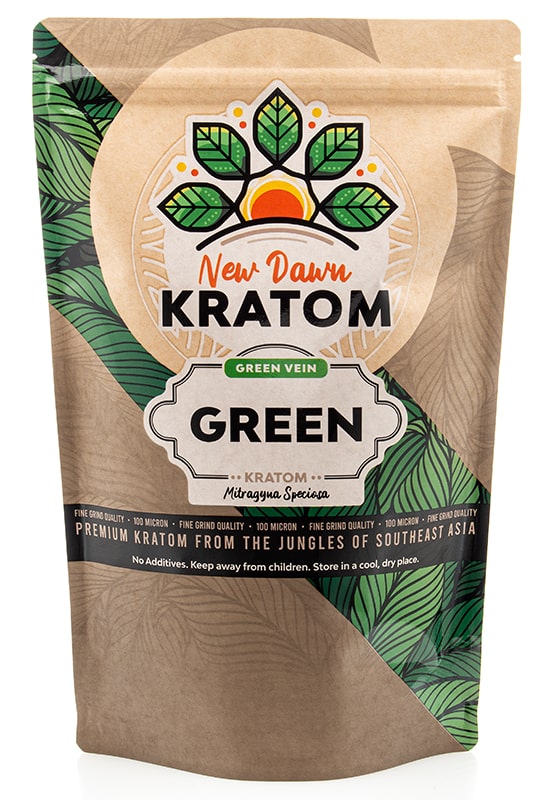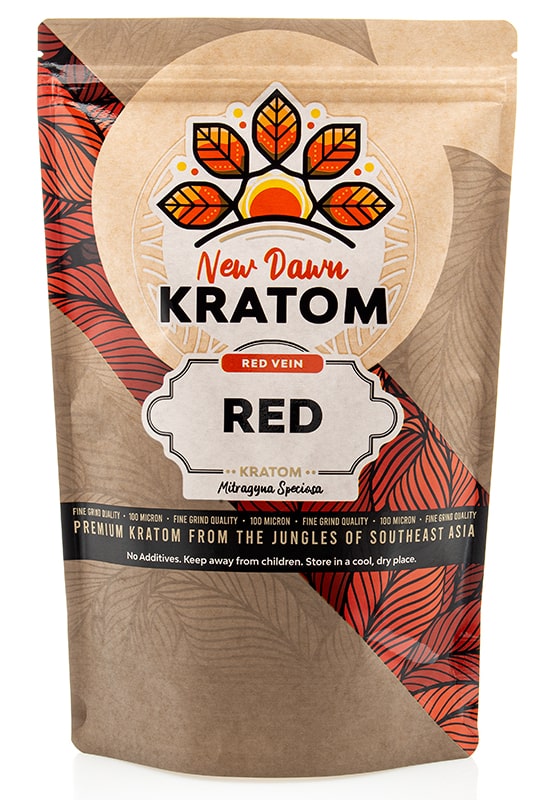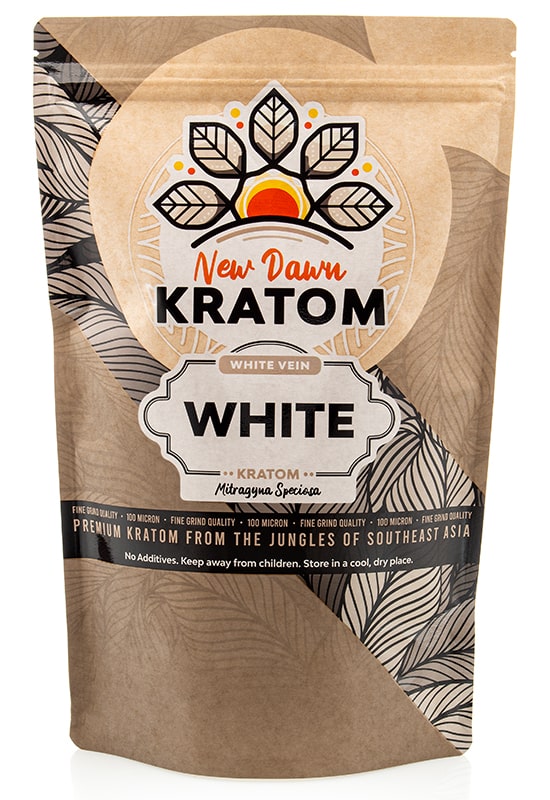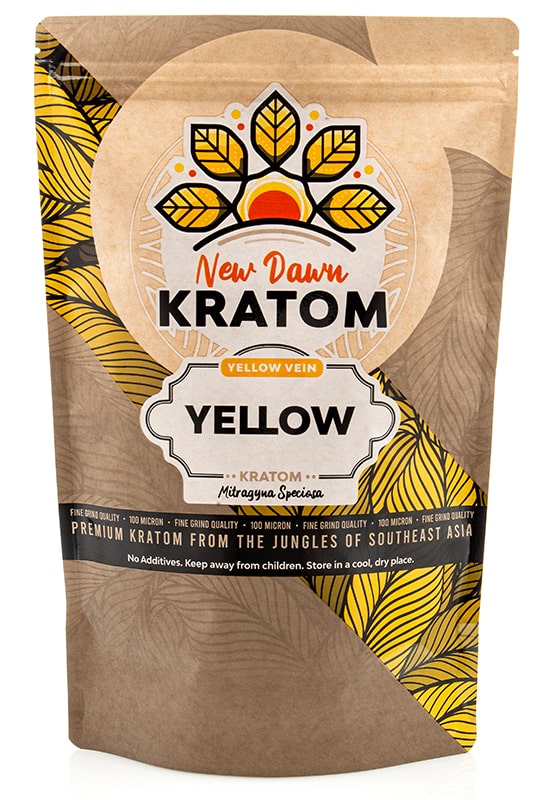Coffee has always been one of the most popular and well-known energy-boosting beverages anyone might have encountered. A single cup can often provide the energy you need to power through your mornings and prevent you from feeling sleepy.
Despite being completely different, both kratom and coffee may offer potential stimulating, energetic, and mood-enhancing effects. Coffee relies solely on the magic of caffeine to provide its wakeful kick, while kratom features a blend of alkaloids that contribute to its subtle stimulatory effects.
While both are potentially energizing, how exactly are they different, and how do you know which one might suit you better? Continue reading to discover everything about kratom and coffee in our comparative guide.
Kratom (Mitragynine Speciosa)
Kratom originates from the same family as the coffee plant, the Rubiaceae family, but the mechanisms for both substances are entirely different. With regards to kratom, its potential effects are due to the unique mixture of over 45 different alkaloids, with mitragynine and 7-hydrox mitragynine being the most significant and making up 60% and 2% of kratom’s total alkaloid concentration, respectively.
The variety in these alkaloids establishes distinct interactions with your body, leading to potential effects that may differ from coffee’s caffeine-driven stimulation.
| Common Effects | Potential Responses |
|---|---|
| Influence on energy levels | It may enhance alertness and energy |
| Varying impact on mood states | Could improve or stabilize mood, depending on the strain |
| Stimulating effects at lower doses | Potentially increases focus, mental sharpness, and stamina |
| Sedative effects at higher doses | It might promote relaxation and calmness |
| Social enhancement | It may facilitate sociability and confidence in social interactions |
Coffee
There’s a reason why an estimated 2 billion people enjoy coffee worldwide – the caffeine’s stimulating effects often help enhance an individual’s mental alertness and energy levels. It’s mainly why people have made this beverage a staple in their daily routines in various places all over the world. Coffee and caffeine use is also socially acceptable in almost every culture and is widely available, leading to its popularity and widespread use.
Coffee beans are primarily Arabica and Robusta, which differ in their caffeine levels, overall flavor, and intensity – all affecting the drink’s diversity and taste. Another reason why coffee is a sought-after drink is the variety in its preparation methods, as well as the number of specialty drinks you can create with just the beans. This allows coffee to cater to a wider range of taste preferences and consumption habits.
Kratom vs Coffee – Comparing Active Components
When comparing kratom and coffee, one crucial aspect to consider is their chemical composition. Both substances contain active compounds that interact with the body in different ways, leading to various psychoactive effects.
Active Components Present in Kratom
Kratom’s effects are from alkaloids, with mitragynine and 7-hydroxymitragynine being the most prominent, accounting for 60% and 2% of its total alkaloid content, respectively. These compounds are known to interact with brain receptors as partial agonists, contributing to kratom’s diverse range of effects. Beyond these, kratom contains up to 45 or more other alkaloids, each potentially contributing to its effects as well.
Most regular kratom strains contain between 1.1% and 1.6% mitragynine and typically less than 0.3-0.6% 7-hydroxymitragynine by the percentage of the composition. There are also more potent forms of kratom, such as extracts, which have higher concentrations of alkaloids than those found in natural kratom products. These concentrated forms are designed to deliver stronger effects due to the elevated levels of key alkaloids.
Other Alkaloids in Kratom
Below is an introduction to some of the other significant alkaloids found in kratom.
| Alkaloid | Potential Interaction and Effects |
|---|---|
| Speciogynine | Potentially interacts with nervous system receptors |
| Paynantheine | May have an affinity for certain neural pathways |
| Speciociliatine | Potentially modulates neurotransmitter activity |
| Ajmalicine | It may affect serotonergic and adrenergic receptors |
| Corynantheidine | Potentially influences receptor binding affinity |
| Mitraphylline | May interact with a range of neurotransmitter systems |
| Rhynchophylline | Potentially modulates neurotransmitter system activity |
| Speciofoline | May engage with central nervous system receptors |
| Isomitraphylline | Potentially interacts with neural receptors |
| Isopteropodine | It may have potential effects on neurotransmission |
| Isorhynchophylline | Potentially modulates receptor activity |
Active Components Present in Coffee
The stimulating effects you experience with coffee are primarily due to caffeine, its main active ingredient. Caffeine is a chemical compound that can block the brain’s adenosine receptors, which may lead to enhanced alertness, overall mood, and cognitive functions.
Other compounds present in coffee include antioxidants and other minor stimulants like theophylline and theobromine, which all contribute to its overall flavor, intensity, and potential health benefits. Moreover, the concentration of these active compounds varies with the coffee variety, the bean, and your desired brewing method.
Coffee’s Components and Their Mechanisms
Below is a table outlining caffeine and other notable compounds found in coffee, along with their primary mechanisms of action.
| Component | Mechanism of Action |
|---|---|
| Caffeine | Antagonizes adenosine receptors, enhancing alertness and cognitive functions |
| Theobromine | Mild stimulant that can have a diuretic effect |
| Theophylline | Similar to caffeine, it improves breathing and reduces respiratory muscle fatigue. |
| Antioxidants | Neutralizes free radicals, contributing to overall health benefits |
Kratom vs. Caffeine: Effects Comparison
Below is a table comparing the effects of coffee (caffeine) and kratom is a side by side comparison.
| Effect | Kratom | Caffeine |
|---|---|---|
| Stimulation | Varies by dose: stimulating at lower doses, sedative at higher doses. | Primarily stimulating and enhancing alertness and energy. |
| Mood Enhancement | It may enhance mood and offer a sense of well-being. | Mood enhancement is generally tied to reduced fatigue and improved focus. |
| Physical Effects | Energizing or relaxing effects based on strain and dosage. | Increases in physical energy, but may cause jitteriness. |
The Best Ways to Consume Coffee and Caffeine
Like kratom, coffee and caffeine are versatile substances with a wide range of consumption methods. Each form differs in how the coffee granules or beans are dissolved and in the step-by-step preparation. Moreover, there are other snacks and beverages rich in caffeine for individuals who dislike the coffee’s bitter taste. Let’s discuss the most common ways to consume coffee and caffeine.
Coffee Consumption
- Brewed Coffee: The most common and traditional method includes hot water filtering through ground coffee.
- Espresso: Concentrated coffee made by forcing nearly boiling water through finely ground beans.
- Instant Coffee: Granulated coffee that dissolves in water for quick preparation.
- Specialty Drinks: Includes lattes, cappuccinos, mochas, and those that combine espresso with milk, flavor extracts, and syrups.
Caffeine Consumption Beyond Coffee
- Tea: A popular alternative source of caffeine, available in many varieties.
- Energy Drinks: Beverages with significant amounts of caffeine to boost energy and alertness.
- Soft Drinks: Carbonated beverages that often include caffeine for its stimulating effects.
- Caffeinated Foods: Items like chocolate and certain energy bars
Common Methods of Kratom Consumption
Kratom is generally bitter, and its taste might not be for everyone, especially new users. But what’s great about kratom is that it’s available in a wide variety of forms and consumption methods, so feel free to choose one that suits your lifestyle and preferences.
- Consuming Raw Powder (Toss and Wash): Directly scooping the powder into the mouth and washing it down with a liquid.
- Capsules: Pre-purchased or DIY capsules for easy consumption.
- Brewing Tea: Using a coffee maker, French press, or kratom tea bags.
- Mixing with Beverages: Dissolving kratom in orange juice, chocolate milk, or smoothies to mask the bitter taste.
- Mixing with Food: Adding to food items like yogurt.
- Consuming Edibles: Eating kratom-infused gummies or chocolates.
- Extracts: Utilizing concentrated forms like liquid shots, tinctures, or capsules, often standardized for mitragynine content.
A Comparision: The Risks and Side Effects
In reality, both caffeine and kratom come with corresponding risks and side effects that increase when you go over the recommended dosage guidelines. The difference between these two is that kratom may present more additional and severe concerns due to its variety of effects, fewer evidence-based data and research compared to caffeine and a variety of dangerous interactions with various medications and drugs. Therefore, the importance of consulting a healthcare professional cannot be stressed enough before incorporating kratom into your routine, considering individual health implications and potential interactions with other substances.
Kratom Side-Effects
- Nausea
- Lightheadedness
- Eye Wobbles
- Alterations in Digestive Processes
- Dizziness
- Headaches
- Sleepiness
- Abdominal Discomfort
- Constipation
- Excessive Perspiration
- Mood Swings
- Blood Pressure Fluctuations
- Visual Disturbances
- Regurgitation
- Dependency Risk
The summary above highlights the most common side effects of kratom consumption; however rare and serious adverse reactions may occur in some users. The chances of these occurring may even become more likely when you mix kratom with other medications and substances, have an underlying health condition, or consume high dosage ranges or purified kratom products like extracts.
Also be aware that the FDA has issued warnings to the public regarding kratom consumption because of safety, abuse concerns, and significant health risks. Again, this is why it’s crucial to always speak with your physician before using kratom products.
Coffee Side-Effects
- Insomnia
- Nervousness
- Restlessness
- Stomach Upset
- Increased Heart Rate
- Nausea
- Headaches
- Dizziness
- Dependency
- Increased Blood Pressure
- Jitteriness
The caffeine content in your cup of coffee also comes with a risk of side effects, although they are generally more tolerable with a less chance of developing severe ones. Such may include insomnia, restlessness, stomach issues like nausea, nervousness, increased heart rate, and sudden blood pressure changes. The chances of developing dependence on caffeine are also more likely with long-term heavy use.
Remember that monitoring caffeine intake and being mindful of its effects on your body is crucial. Moderation is key, and always take precautions when consuming caffeine, especially for individuals with certain medical and heart conditions.
Kratom and Coffee – FAQs
Comparing and understanding the differing mechanisms of action of kratom and coffee means you’re also well aware of the basics. Let’s answer the most frequently asked questions about these substances.
Is Kratom Legal?
Kratom’s legality varies per state, including in the United States. Kratom is not classified as a controlled substance at the federal level but does vary by the state, county, and city level in some jurisdictions, emphasizing the complexity of kratom’s legal landscape at the state level.
| State | Status |
|---|---|
| States Where Kratom is Banned | Alabama, Arkansas, Indiana, Rhode Island, Vermont, Wisconsin |
| States with Consumer Protection Acts | 11 states including Utah, Georgia, and Arizona have passed Kratom Consumer Protection Acts to regulate rather than outlaw kratom. |
There are also some counties and cities within states where kratom is legal that have banned the botanical, clearly reflecting ongoing debates and conversations regarding kratom’s safety, benefits, and potential risks.
What are the potential side effects of coffee consumption?
Coffee consumption mainly influences mood and energy levels. However, excessive caffeine intake may lead to changes in heart rate, restlessness, and trouble falling asleep, to name a few of the most common ones.
Can you combine kratom and caffeine?
It’s not recommended to combine kratom and caffeine, mainly because there is a lack of research and scientific study explaining their possible interaction. Without evidence-based data, avoid mixing caffeine and kratom to minimize the risk of experiencing adverse reactions.
How does caffeine impact the body’s metabolism?
Caffeine may stimulate the central nervous system and influence energy production, possibly elevating and stimulating it to make you feel more energized and awake. However, remember that excessive caffeine consumption may also result in potential sleep disruptions and restlessness.
Are there any long-term effects of consuming kratom?
There are limited studies on the long-term effects of consuming kratom. However, prolonged daily use may lead to habit formation, tolerance, and potential negative effects upon cessation. Always approach kratom cautiously and be aware of potential risks associated with its long-term consumption.
Are kratom and coffee habit-forming?
While kratom and coffee both have stimulating properties and can lead to dependency if used in excess, kratom often faces more scrutiny due to its nature and potential effects on the body.











